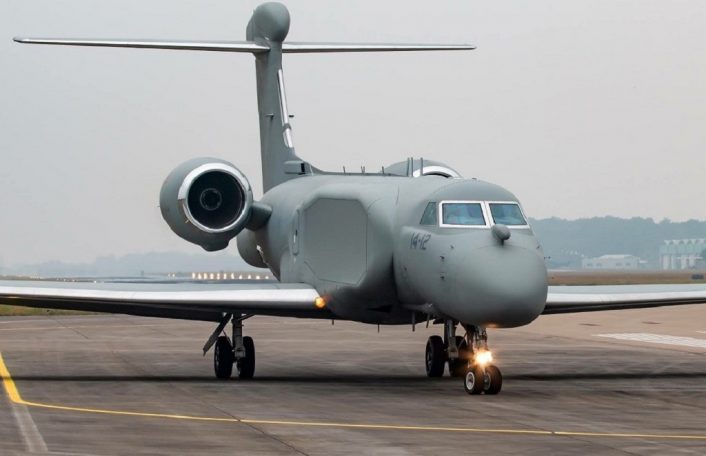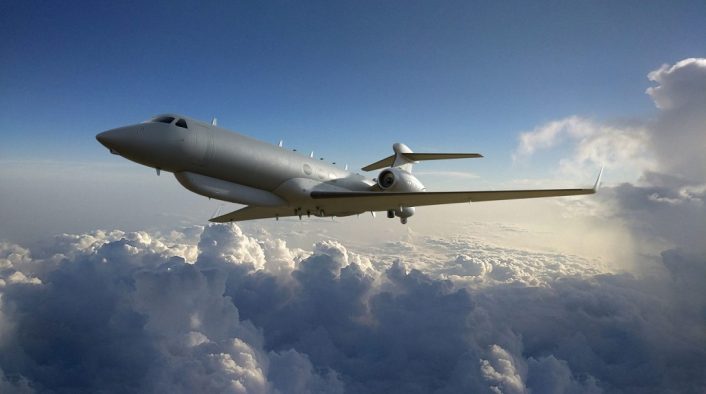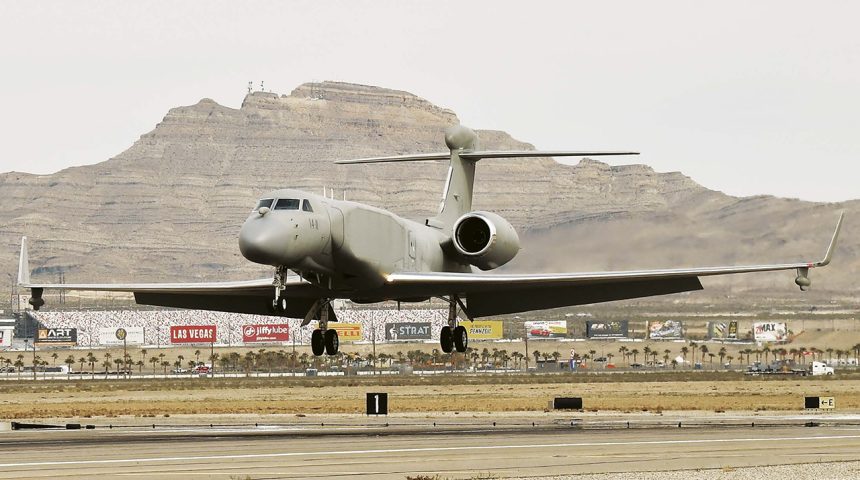The program aims to get two fully configured SIGINT Gulfstream G550 aircraft plus six others to be converted later for improved C4ISTAR and CAEW/BM&C capabilities.
The Italian government is working on the acquisition of new Gulfstream G550s to be used in the SIGINT (Signal Intelligence) role. The requirement emerged for the first time in 2009, when the Ministry of Defense requested two JAMMS (Joint Airborne Multi-sensor Multi-mission System) aircraft to replace the single G-222VS (Versione Speciale – Special Version) that was equipped for SIGINT missions in the 1980s. This requirement was found again few weeks ago in the Defense Policy Document for 2020-2022 (Documento Programmatico della Difesa 2020-2022).
Let’s check some background into first. The new Defense Policy Document mentioned the requirement for an enhanced engagement capability of the Italian Armed Forces. Among them, we can find the need for new precision weapons that can be controlled during every phase of its trajectory (maybe hinting at some weapon with Man-In-The-Loop guidance), new weapon systems to allow operations in Anti Access/Area Denial (A2/AD) environments, standoff and penetrating weapons, and finally improved C4ISTAR (Command, Control, Communications, Computers, Intelligence, Surveillance, Target Acquisition and Reconnaissance) capability.
Another important topic in the document was the C3 (Command, Control, Communications) capability, which was referred also to the cybernetic and spatial domains. To enhance the C3 capability, the document mentions the prosecution of the NATO Air Command & Control System (ACCS) program, new deployable C2 (Command and Control) systems for the NATO Force Structure (NFS), the participation to the NATO Alliance Future Surveillance and Control (AFSC) program that will replace the current NATO Airborne Early Warning & Control (NAEW&C) assets, the completion of the CAEW/BM&C (Conformal Airborne Early Warning/Battlefield Management and Communication) capability and improvements of the C4ISTAR interoperability.
The new JAMMS aircraft is meant to fulfil both the C4ISTAR and CAEW/BM&C requirements. A first go at this capability was given with the introduction into service of the E-550 CAEW and the dossier sent to the Parliament for approval builds up around the Gulfstream aircraft. The dossier in fact mentions a “multi-mission Gulfstream G550-based system with modern sensors for strategic intelligence and electronic superiority, able to integrate in a C4ISTAR architecture for real-time information sharing and to operate both in autonomous and joint environments, with future provisions for Multi-Domain Command and Control and Electronic Protection”.

The dossier goes on describing how the JAMMS program is part of a new broader strategic concept of defense according to which the military response to transversal and unpredictable future threats, weapons of mass destruction and regional instability, should go through adequate reconnaissance and surveillance capabilities.
The Italian JAMMS program will be structured in more tranches, with the first one, worth 1.2B Euro, covers the acquisition of the first two Full Mission Capable (FMC) aircraft and six “green” airframes that can be converted at a later stage to either JAMMS or CAEW configurations, together with logistic and infrastructural support. According to some analysts, the decision to get six non-equipped aircraft could be due to the G550 going out of production soon. The program is set to start in 2021 and the Gulfstreams will be based at Pratica di Mare Airbase, near Rome, already home of the E-550 CAEW. The latter is also getting a logistic support and operational sustainment program for the following years.
With this program and a ten-aircraft strong fleet, the Italian government is also aiming to create some contractual offsets and a Maintenance Support Centre that could offer services to the Gulfstream fleet operating in Europe and Middle East, with the creation of about 200 jobs.
The mission of the new Gulfstream, whose designation is still unknown (supposedly E-550B or R-550), will be in charge of the actualization of the national intelligence database, characterization of tactic intelligence targets, search for new targets of interest, survey of the operational environment of deployed forces, targeting process support, airborne early warning and electromagnetic surveillance and protection.
The dossier does not provide any clue about the company contracted for the JAMMS program, stating only that, given the complexity of the system, the program will not be strictly national. Given that Israeli Aerospace Industries (IAI) were in charge of the conversion of the E-550 CAEW, they were considered the most probable contractor. However the Rivista Italiana Difesa (Italian Defense Magazine) was able to confirm that the contractor of the two FMC aircraft will be L3Harris, which was already contracted for the integration of the sensor suite aboard the King Air 350ER SPYDR used by the Italian Air Force as a gap filler in the SIGINT role.
L3Harris is also providing similarly configured SIGINT G550s, designated MC-55A Peregrine, to the Royal Australian Air Force and developed based on the experience of the EC-37 Compass Call II and other variants. Three airframes are currently being converted, with up to five totals on order. According to industry experts, the capabilities of the MC-55 will be comparable to the USAF RC-135V Rivet Joint and RAF Airseeker R Mk.1 (RC-135W).










